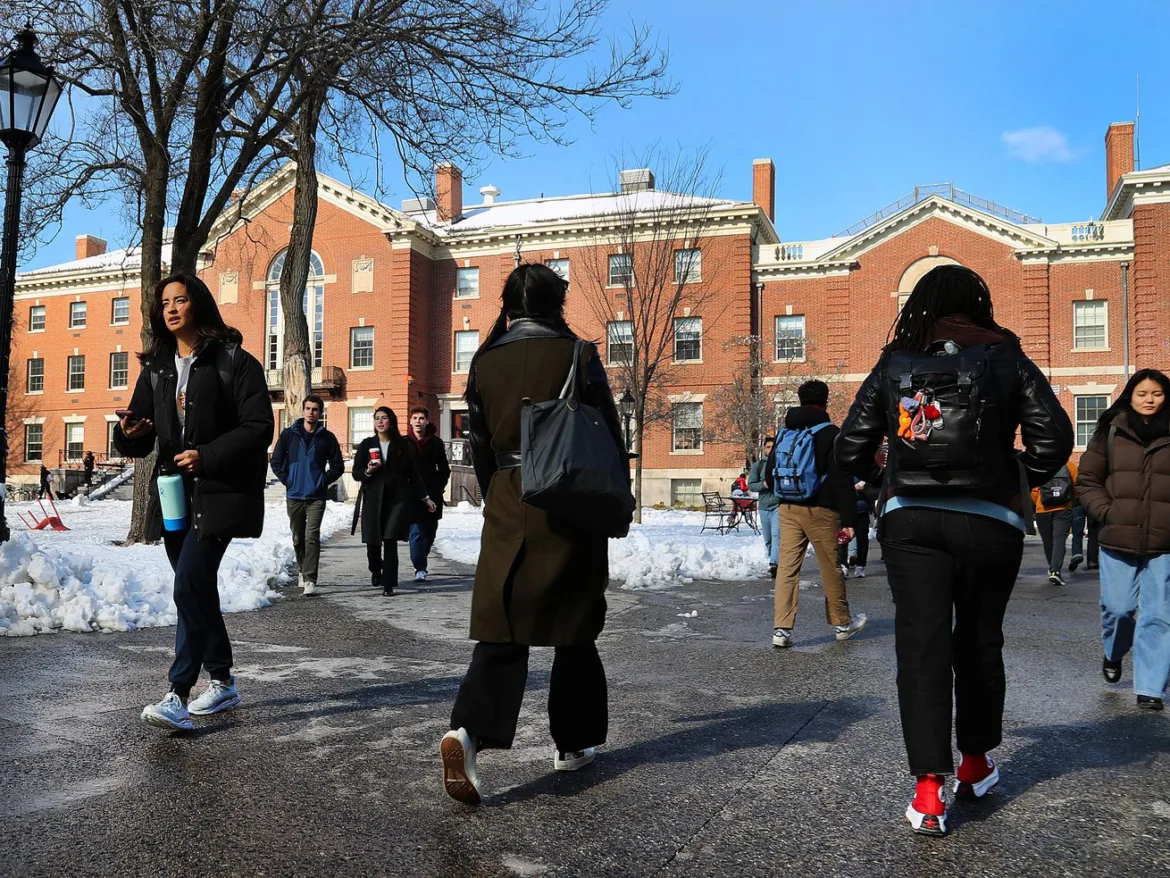The number of first-time filers has dropped 40 percent since the new FAFSA’s bungled rollout.
A report released earlier this year from the National Clearinghouse Research Center found that higher education is finally experiencing a reversal in enrollment declines for the first time since the pandemic began.
In fall 2023, there were about 176,000 more undergraduates enrolled, a 1.2 percent increase over fall 2022’s total enrollment at colleges nationwide. The trend could continue as applications continue to increase.
College enrollment began retreating in certain parts of the country after a peak in 2010, so the increase is a welcome change as industry watchers continue to fear “the enrollment cliff” — shrinking class sizes year after year that have led to layoffs and consolidation and, ultimately, the shuttering of schools. A variety of factors have driven up enrollment this year: More older students matriculated, certificate and vocational programs at community colleges attracted more pupils, and those who had dropped out in previous years returned to complete their degrees.
“The undergraduate enrollment increase is significant. It’s the first time that we have seen this happen in our tracking, which goes back to 2015,” said Jeremy Cohen, a research associate at the National Student Clearinghouse Research Center.
But as the annual May 1 enrollment deadline nears for many colleges, the tumultuous rollout of the new FAFSA, which has caused massive delays in the admissions schedule for families and schools, could destroy the gains.
As of late March, 40 percent fewer first-time filers had completed the FAFSA — it stands for the Free Application for Federal Student Aid — compared with the same time last year, according to the National College Attainment Network, which analyzed new data from the Department of Education. In all, an estimated half a million to 700,000 fewer high school seniors will complete the FAFSA compared to the class of 2023, the NCAN told Inside Higher Education.
“It’s bad. There are a lot of words not fit to print to describe how bad the FAFSA rollout has been and the impact that’s going to have on student enrollment,” said Katharine Meyer, a Brookings Institution fellow at the Brown Center on Education Policy. “I remain cautious to see what the fall 2024 [enrollment] numbers look like, to see if [the enrollment gains] are a shift in the trend, or if [2023] just ended up being a nice year.”
The debate over whether college is worth the cost is ongoing, and the FAFSA processing delays further complicate it. If students can’t access grants and loans for the coming academic year, college will be out of reach, particularly for low-income students. Ultimately, the promise of financial security — one of the most touted benefits of earning a post-secondary degree — could be elusive for many, especially students who stand to benefit the most from a college degree.
Enrollment-dependent institutions will suffer, too. It’s why higher education experts are putting pressure on the Department of Education to fix these errors quickly.
“We are urging the department to take immediate steps to address these issues. In the meantime, we are encouraging colleges and universities to be flexible with their enrollment deadlines, so we don’t inadvertently lose students in this process,” said Hironao Okahana, the assistant vice president and executive director of the Education Futures Lab at the American Council on Education, which tracks higher education trends. “We still believe that there is learning that happens at the post-secondary level that develops critical thinking and other aspects that are really important in democratic society, writ large.”
“That value proposition itself is still there, and we have work to do as a sector to make sure that those opportunities are provided equitably,” he added.
Here’s what we know about enrollment trends and why the FAFSA complications might completely erase any gains this fall.
With some colleges set to charge students $100,000 for room, board, and other expenses each year, there’s already a perception, among students and families, that higher education is unaffordable — a reality forcing some students to not attend altogether. Now, the chaotic rollout of the FAFSA has become a new major roadblock.
Congress directed the Department of Education to revamp the historically complicated FAFSA form to make it simpler for families to file and get financial aid awards. But the rollout grew disastrous beginning in January after thousands of students reported technical glitches that prevented them from completing the new form. While 40 percent fewer students completed the form this year, 27 percent fewer students submitted the form, according to data released by the Department of Education this week. The submission rate includes forms that still need to be corrected due to a variety of processing errors.
After weeks of technical challenges that prevented families from completing the new form, the Department of Education announced that it would begin to transmit tax information to schools. Colleges are supposed to use this information to create financial aid packages for students, but even this step has presented new difficulties.
School leaders have reported receiving inaccurate tax information for thousands of applicants. The Department of Education recently announced that 200,000 of the 1.5 million applications that it had sent to schools before March 21 had miscalculation errors. The latest hiccups could delay the admissions process further, well past the typical May 1 enrollment deadline that many schools have already extended.
“I expect to see this have a really stark impact on enrollment that will likely be concentrated among community college students, who tend to be lower income, and lower-income students in general,” Meyer said.
Community colleges saw the biggest enrollment increases last fall, adding 118,000 students — a 2.6 percent gain over the prior year, according to the National Clearinghouse report. Older students, those ages 21 and above who enrolled as first-year students, drove the enrollment increase. Community colleges that offered vocational training and dual-enrollment programs attracted more students, reversing pandemic declines.
But the FAFSA complications could shift where students choose to go to school as they think through what they can afford, Meyer said. This means more students could opt for affordable options that might not meet their academic needs. Other students may choose to forgo college entirely.
Students who plan to enroll as first-year students aren’t the only group who stand to be affected. “While much attention has focused on how this will impact first-time students and enrollment of new college classes, which it undoubtedly will, the effects on current students should not be overlooked,” said Cohen. “Because students who rely on financial aid need to fill out the FAFSA every year, delays or uncertainty in aid packages could lead to students who might otherwise continue their education stopping out instead.”
Enrollment-dependent institutions are also vulnerable. “There are institutions where the difference of 100 students is actually the difference between staying open and closing,” said Meyer. “There are students who are already enrolled in these precarious institutions that could only end up closing in the next year or two because of this.”
Wisconsin’s Northland College, which enrolls around 526 students, recently declared financial exigency due to declining enrollment and rising costs and is deciding whether to close. The College of Saint Rose in Albany, New York, announced it would close at the end of the 2023–24 academic year due to enrollment “caused by both a shrinking pool of high school graduates and the prolonged negative impact of COVID-19,” which made it struggle to manage operating expenses.
“In the long run, I think there’s every hope and expectation that this FAFSA simplification will deliver on its promise to get more low-income students into college,” said Meyer. “But the class of 2024 is being rocked really hard.”



